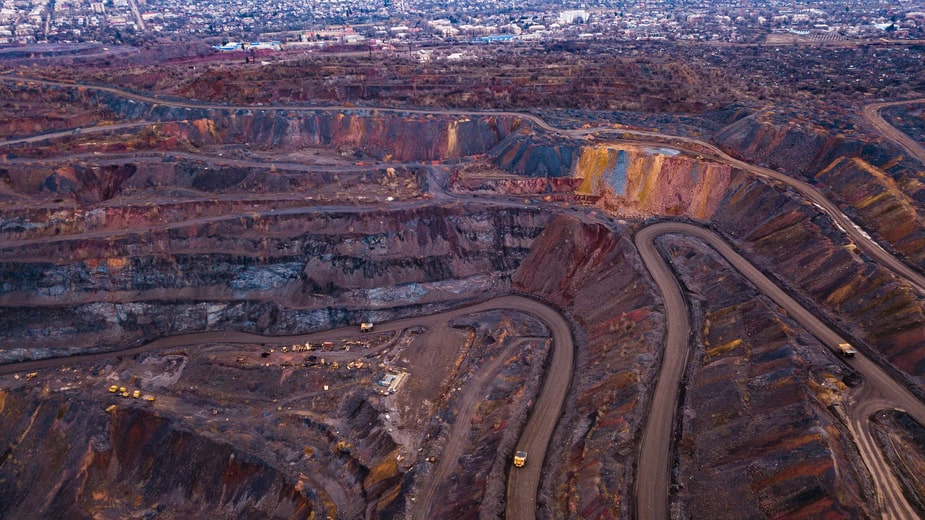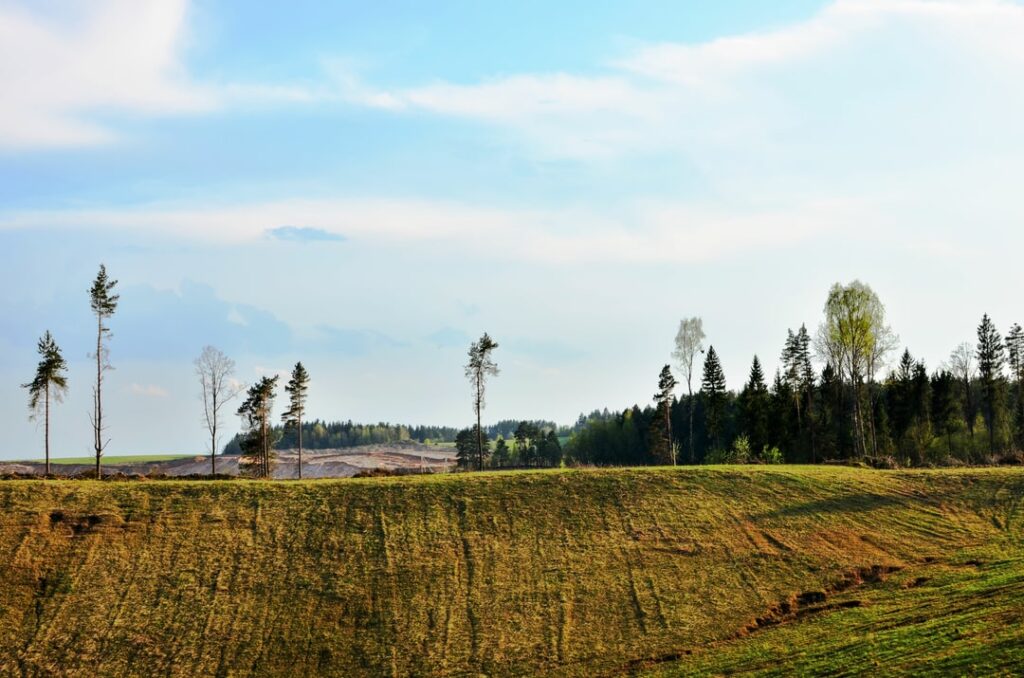Old Processes Seeking New Solutions
Minerals are one of many ‘behind-the-scenes’ links of industrialized critical infrastructure supply chains that can seem pretty mysterious to average people. However, a basic understanding of what minerals are, how they are used, how they are discovered, extracted from the land, and processed is useful information for those of us who may not realize that dozens of refined minerals are all around.

An open iron mine
For example, minerals (classified by first-world economies as critical raw materials, or CRMs) are necessary for existing and emerging advancements in energy, communication, medical care, heating and cooling, transportation, and in various consumer-level products. Such things as fiber optics, night vision, rechargeable batteries, furnaces, laptops, and semi-conductors all rely on minerals. So do pesticides, smart phones, satellites, LCDs, solar cells, electric car batteries, imaging technologies, even baby car seats and the colors of fireworks. And this is but a partial list!
Most countries, whether rich in mineral resources or mostly reliant on imports, have developed some type of strategy for mineral-related supply chain activities that may include one or more of the following: exploration and discovery, development and extraction, production, processing, and reclamation.
Characteristics
Minerals generally possess five characteristics: they are naturally occurring, they’re solid, inorganic, and they’re crystalline with a consistent chemical composition.
Finding Minerals: Exploration and Discovery Stage
Information about mineral locations is achieved in myriad ways, including 3D surface maps using lidar; geological survey maps; radiometric and aeromagnetic data; discovering the geochemistry of a region by studying its rocks, soils, and sediments; mineral deposit databases; and geologists performing on-site core sampling.

Rock with mineral presence detected
The U.S. recently launched an initiative called Earth Mapping Resource Initiative, or Earth MRI “to improve its knowledge of the geologic framework of the country and to identify areas that have the potential to contain undiscovered critical mineral resources.”1
During this stage, exploration permits are granted, and impact assessments and feasibility studies are performed. Designs of the potential mine are also drawn up.
Because of the complexity of discovery, and the numerous factors – including protest, public comment periods, and lawsuits – that factor into decisions about whether a mine can or should progress, ten years or more can pass from exploration to permitting. In Sweden, for example, there were 604 exploration permits in 2016, but only 14 active mines.2
Mining Minerals: Development and Extraction
Once a mine is permitted, it can take an additional five to ten years — or more — to develop and build the mine, depending on the type – open surface (pit, strip, and placer) for minerals close to the surface or in streambeds, or underground, for extracting vein-type deposits. In addition to the actual mine, there may need to be roads built, forests removed, housing demolished (or constructed for employees), as well as environmental management systems put in place for reporting and compliance.
Minerals Made Useful: Production and Processing
Processing is a complex, multi-step process that varies with the type of mineral. Some common steps include crushing and milling, which separate ore from waste rock, and there may also be chemical processes that involve the addition of cyanide or acid, and heat processing or smelting.
Critical Minerals and Green Energy
Batteries, electric vehicles, wind turbines, hydrogen fuel cells. On the surface, these “green” materials, components, processes, and products might appear like a ‘silver bullet’ solution to problems of an increasingly sophisticated world. However, many green energy initiatives are also reliant on minerals, specifically a class called rare earths, which are not abundant, which require a massive amount of processing, and which often lead to toxic by-products.3
Looking Ahead
Minerals classified as “critical” may be located near or within the boundaries of government lands and Indigenous communities, which has historically created tense relationships between corporations, government, and people who rely on and care for the landscape.4 Transparent ESG reporting could even steer potential investors away from corporations that deny human rights and environmental obligations.
There is hope that new ESG reporting standards will create different types of collaborative partnerships and broader, more inclusive discussions to address destructive techniques.
Some mining companies are beginning to invest in land rehabilitation. In Australia, ALCOA supports on-site nurseries to help with reseeding, replanting, and biodiversity.5 Others are looking to replace topsoil lost through strip mining. There are also new initiatives that are developing ways to reuse CRMs through recycling. Additionally, there is R&D on the development of synthetic minerals.

Mining land undergoing rehabilitation
While traditional extractive mineral mining approaches have been highly profitable in the short term, it is clear that new-world thinking will be necessary to solve new-world problems.

